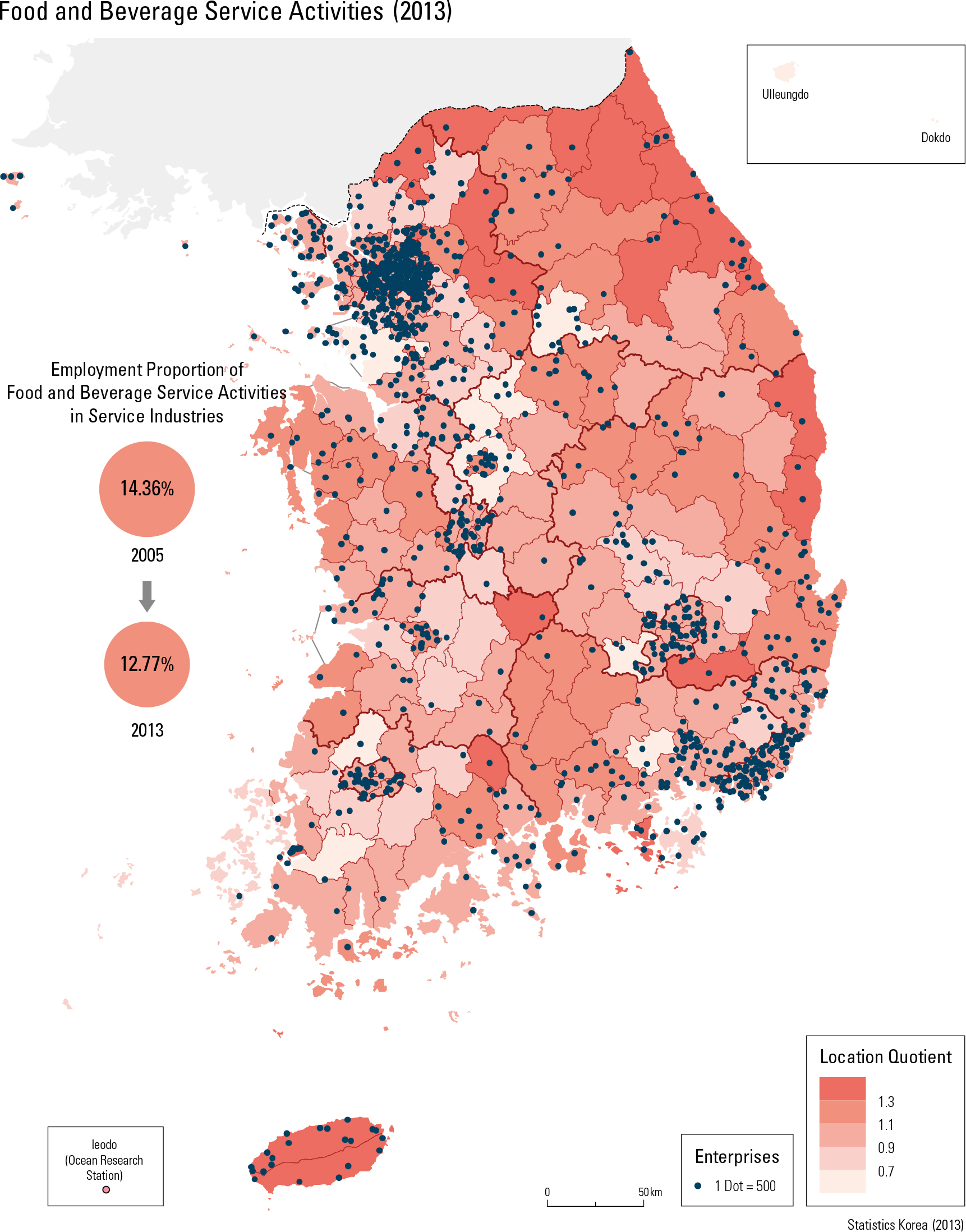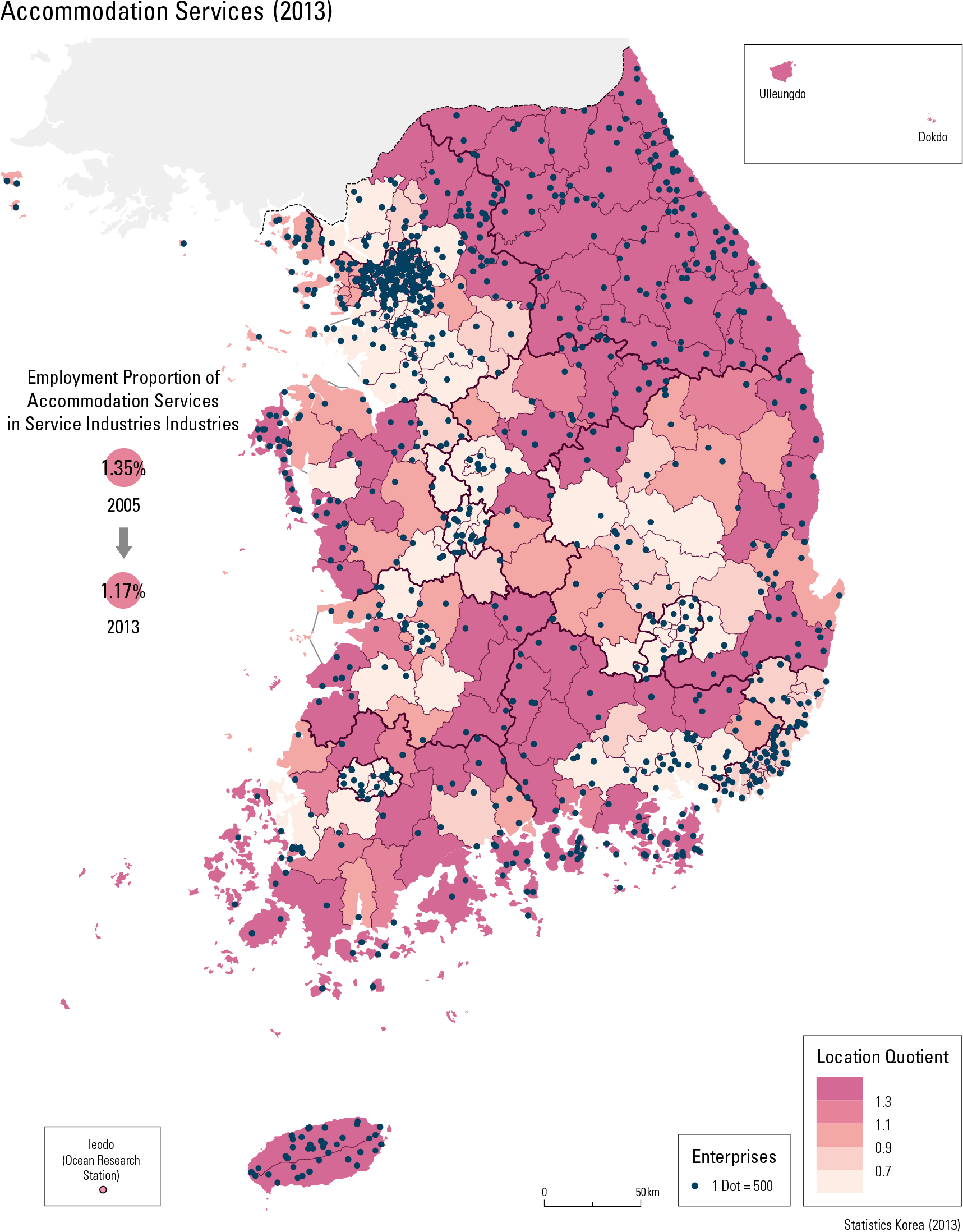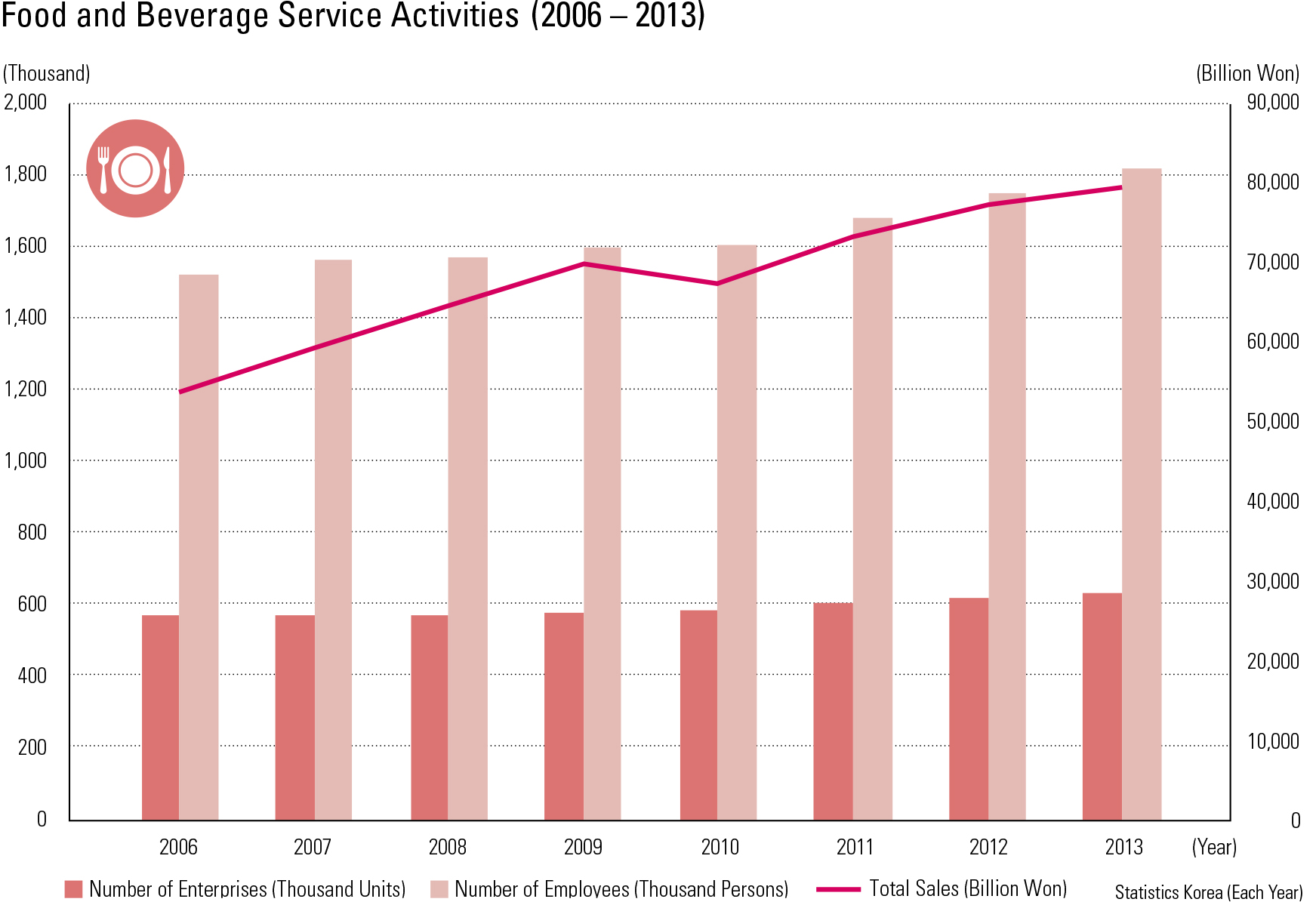English III
When the places where people work and live become geographically farther apart and leisure activities become readily available, eating out away from home increases. The food industry represents the economic activities that include any facilities for cooking and consuming food prepared for customers directly within the compound. More specifically, it includes restaurants, diners, snack bars, cafes, bakeries, and drinking places. It also includes takeout and delivery services, catering, and actually cooking for customers on location upon request. Lifestyle changes have brought more opportuni- ties for short-term travel, such as frequent business trips due to active regional economic interactions or leisure trips due to the ve-day work week. The lodging industry represents all kinds of short-term sleeping accommodations for the general public or for their members, including camping facilities and campsites. Although there have been some momentary de- clines, the overall pattern for the establishments, employees, and sales in the food and lodging in- dustries have grown steadily. In 2013, there were 636,000 total food industry establishments, with 1.8 million total employees, and 73 billion US dollars in total sales. These numbers represent an increase since 2006 of 10.2% for the number of establishments, 9.3% for the number of employees, and 48.1% for total sales. For the lodging industry, on the other hand, there were over 50,000 estab- lishments with 167,000 employees and 10 billion US dollars in total sales in 2013, representing an increase since 2006 of 12.8% for establishments, 16.9% for employees, and 35.4% for total sales. Food industry establishments tend to be concen- trated in metropolitan areas where the population density is higher, while lodging businesses show an overall balanced distribution pattern, including rural areas with tourist attractions.
page_2 |



